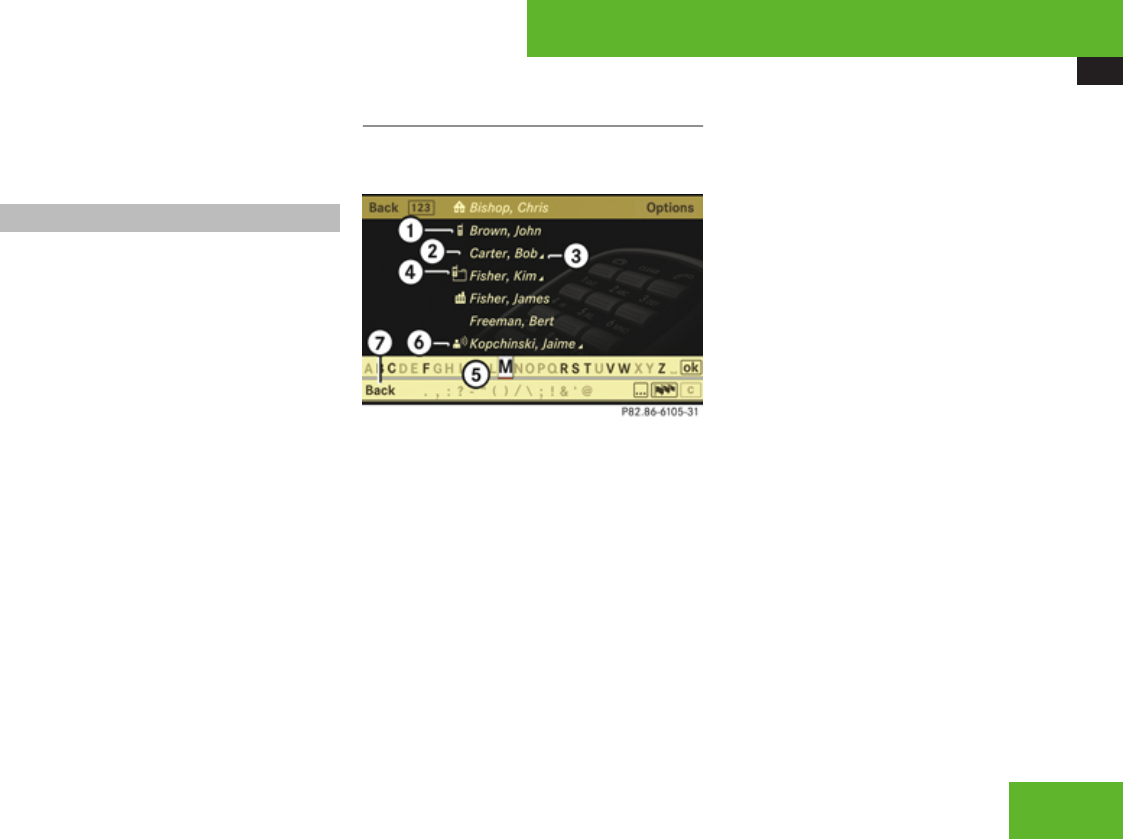
COMAND telephone
169
available to you which are described in the
“Functions during a single- call connection”
section (Y page 167).
COMAND phone book
The COMAND phone book contains both the
COMAND address book entries and mobile
phone entries that have at least one
telephone number.
The COMAND address book entries are
permanently available even when a mobile
phone is not inserted in the cradle.
When the mobile phone is inserted in the
cradle, COMAND will read the phone book
entries in the mobile phone and compares
them with the COMAND address book
entries.
If any of the telephone numbers of a phone
book entry in the mobile phone are the same
as an address book entry, COMAND will only
display the address book entry.
If the entries are not the same, the COMAND
phone book will show the phone book entry
in the mobile phone.
Calling up the COMAND phone book
X
Select Telephone £ Name.
The COMAND phone book appears.
Example illustration: Phone book with name
display and smart speller activated
1
Category symbol ¢
2
Upper entry from address book (without
category symbol)
3
Symbol + for several telephone numbers
(subentries) under the main entry
4
Symbol y for summarized entries from
the mobile phone with the same name but
different telephone numbers
5
Smart speller
6
Voice ¦ entry symbol
7
To close the phone book
Entries with category symbol 1 come from
the mobile phone. The following category
symbols are possible:
R
¢ = symbol for Mobile category
R
@ = symbol for Home category
R
\ = symbol for Work category
R
. = symbol for Fax category
R
ï = symbol for Pager category
R
° = symbol for Main category or for
unknown category or for phone entries that
are saved on the SIM card of a GSM mobile
phone
Entries without a category symbol or with the
¦ symbol come from the COMAND address
book.
Entries with the ¦ symbol contain a voice
entry. Voice entries can be added to the
address book (Y page 174). This function is
available in vehicles with Voice Control.
Control systems
Z


















